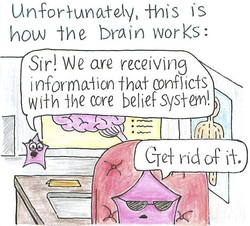Essential idea: Alleles segregate during meiosis allowing new combinations to be formed by the fusion of gametes.
The micrographs above show the formation of bivalents (left) and the segregation caused by both anaphase I and II (right). These possesses combined with crossing over and random orientation ensure a near infinite variation of genetic information between gametes.
Understandings, applications and skills
| 3.3.U1 | One diploid nucleus divides by meiosis to produce four haploid nuclei. |
| 3.3.U2 | The halving of the chromosome number allows a sexual life cycle with fusion of gametes. |
| 3.3.U3 | DNA is replicated before meiosis so that all chromosomes consist of two sister chromatids. |
| 3.3.U4 | The early stages of meiosis involve pairing of homologous chromosomes and crossing over followed by condensation. [The process of chiasmata formation need not be explained.] |
| 3.3.U5 | Orientation of pairs of homologous chromosomes prior to separation is random. |
| 3.3.U6 | Separation of pairs of homologous chromosomes in the first division of meiosis halves the chromosome number. |
| 3.3.U7 | Crossing over and random orientation promotes genetic variation. |
| 3.3.U8 | Fusion of gametes from different parents promotes genetic variation. |
| 3.3.A1 | Non-disjunction can cause Down syndrome and other chromosome abnormalities. |
| 3.3.A2 | Studies showing age of parents influences chances of non-disjunction. |
| 3.3.A3 | Description of methods used to obtain cells for karyotype analysis e.g. chorionic villus sampling and amniocentesis and the associated risks. |
| 3.3.S1 | Drawing diagrams to show the stages of meiosis resulting in the formation of four haploid cells. [Drawings of the stages of meiosis do not need to include chiasmata. Preparation of microscope slides showing meiosis is challenging and permanent slides should be available in case no cells in meiosis are visible in temporary mounts.] |
[Text in square brackets indicates guidance notes]
Presentation and notes
The presentation is designed to help your understanding. The notes outline is intended to be used as a framework for the development of student notes to aid revision.
|
|
Weblinks
|
Phases of Meiosis
Phases of Meosis by the Khan academy Meiosis by St Olaf Meosis by Biostudio Random Orientation and Independent Assortment Random Orientation by McGraw and Hill Independent Assortment by Sumanas Inc. |
Non-disjunction and Trisomy
Non-disjunction and Trisomy by Learn.Genetics Non-disjunction happening during Meosis I and Meosis II by Biostudio Testing for Genetic Disorders Amniocentesis procedure by MedIndia |
Nature of science
Making careful observations—meiosis was discovered by microscope examination of dividing germ-line cells. (1.8)
Theory of knowledge
 source: http://transition-lab.com/blog/
source: http://transition-lab.com/blog/
In 1922 the number of chromosomes counted in a human cell was 48. This remained the established number for 30 years, even though a review of photographic evidence from the time clearly showed that there were 46. For what reasons do existing beliefs carry a certain inertia?
Additionally to what extend is cognitive inertia governed by the brain's neurobiology?
Additionally to what extend is cognitive inertia governed by the brain's neurobiology?

